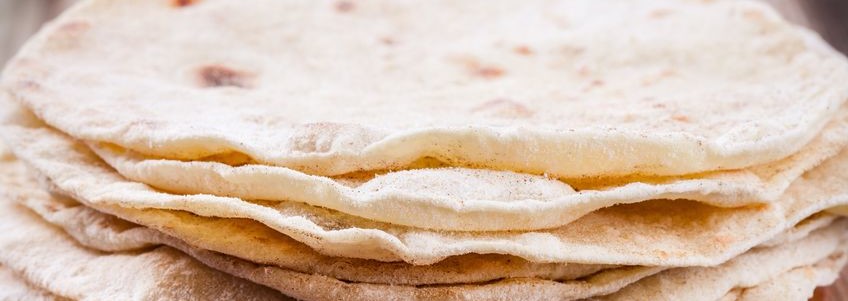
Can we just appreciate tortillas for second? They’re delicious and go with almost anything. It’s no wonder they are an ever-growing sector of the baking industry and a staple in many households. In fact, tortillas represent around 30% of sales in the U.S. baking industry, making them the second most popular bread type in America.
Let’s take a look at flour tortillas
The dough for flour tortillas is usually either leavened by steam generated during baking or raised lightly with a small amount of baking powder/yeast. All flour tortillas contain at least four basic ingredients: wheat flour, water, fat, and salt.
Industrially, they are processed 2 ways:
- Hot-press: a more automated procedure, it involves pressing the round and proofed dough pieces in a heated, hydraulic stamping equipment. They tend to be smoother in surface texture and more elastic.
- Die-cut: the dough is extruded in a continuous band, followed by sheeting and cross rolling to the correct thickness. Then, it’s cut with a circular die into individual round pieces whose diameter is identical to that of the die. This method greatly reduces the production cost.
Here’s a standard formula:
- Patent flour, 11–12% protein content (100%)
- Water (45.0–60.0%)
- Fresh Yeast (compressed) (0.1–1.0%)
- Salt (0.1–2.5%)
- Shortening (2–10%)
- Gums (water holding improvers and dough strengtheners) (0.3–4.0%)
- Soy flour (water holder and nutritional profile improver) (1.0–5.0%)
- Vital wheat gluten (dough strengthener) (0.3–5.0%)
- Non-fat dry milk (0.3–2.0%)
- Ascorbic acid (oxidizing agent) (0–200 ppm based on flour weight)
- Vinegar 100 grain or 10% acetic acid content (mold inhibitor) (0–1.0 lb / 100 lb flour)
Process:
- Scaling/metering of ingredients
- Mixing
- Dividing and rounding
- Proofing
- Sheeting/stretching or hot-pressing
- Baking
- Cooling
- Counting and stacking of units
- Packaging

